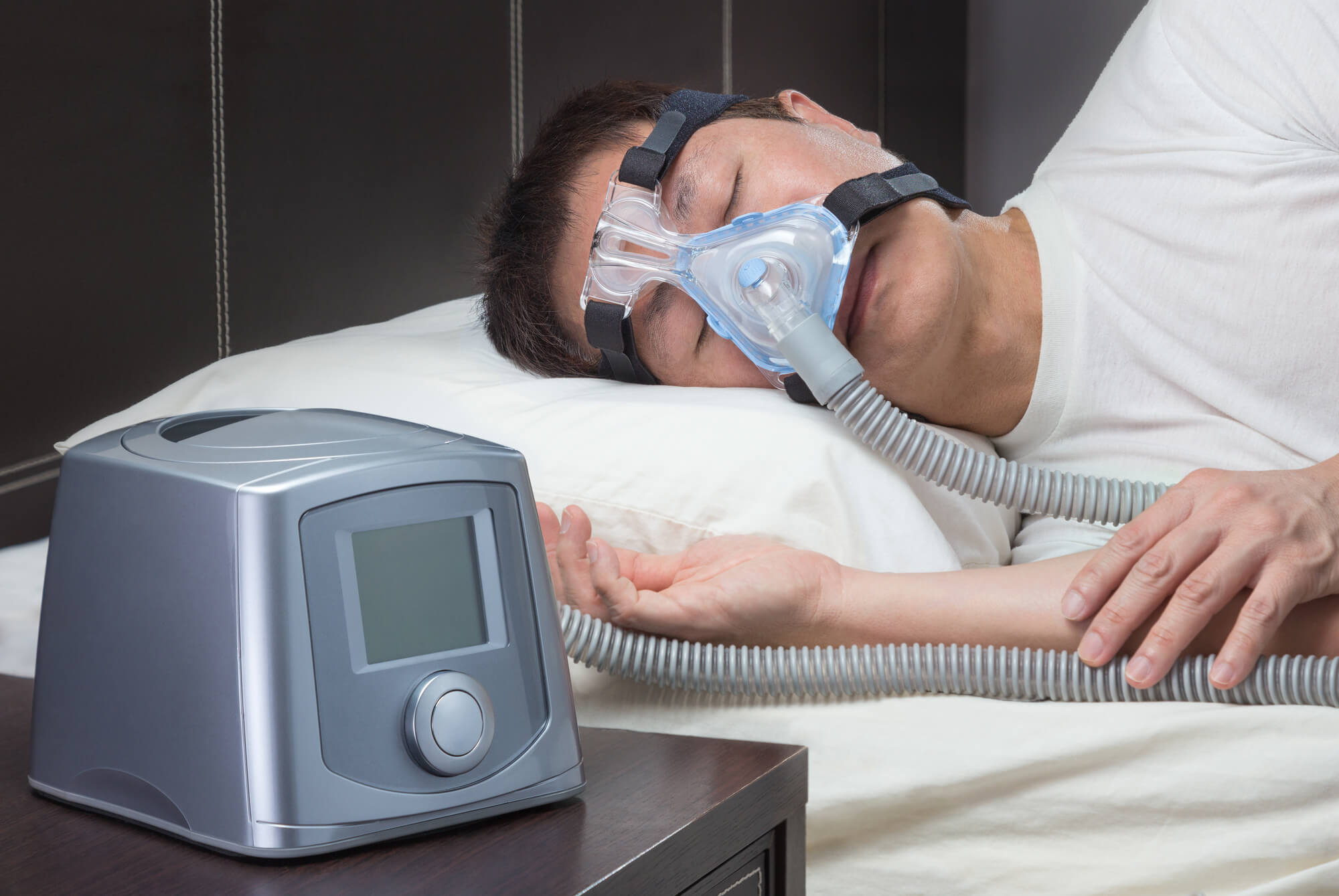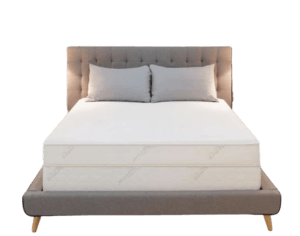More than 22 million Americans are suffering from sleep apnea with 80% of cases remaining undiagnosed and untreated. As a result, millions of Americans will have to deal with serious illnesses like glaucoma, diabetes, and cancer that could have been avoided.
Think about it, if you are having trouble sleeping a night in a sleep clinic can add years to (or even save) your life. We’re going to tell you what you should expect from a sleep apnea test and walk you through treatments and side effects.
Follow along and improve your sleep health today.
What is Sleep Apnea?
Sleep apnea is a sleeping disorder categorized by stopped breathing throughout the night. When the disorder goes untreated, you can stop breathing hundreds of times during a single night of sleep. This cuts off oxygen to the brain and the rest of the body and can cause serious issues, including stroke and suffocation.
Types of Sleep Apnea
There are two types of sleep apnea, Obstructive Sleep Apnea is the most common. It comes from a blockage in the airway during sleep. The blockage usually comes from soft tissue in the throat.
Central Sleep Apnea isn’t caused by blockages. Instead, it occurs when your brain doesn’t instruct the muscles to breathe during sleep.
Who Does Sleep Apnea Affect?
Any of us, young and old can be affected by sleep apnea. However, some are at higher risk than others. Including:
- Those with a family history of sleep apnea.
- People 40+
- Obese people.
- People with large necks, tongues, and tonsils.
- People will small jawbones.
- People with sinus trouble, allergies, or a deviated septum.
Sleep Apnea Symptoms
Symptoms of sleep apnea are as follows: Sleepiness throughout the day including times you’re driving, having a sore or dry throat when you wake up, headaches early in the day, forgetfulness, mood swings, low libido, and waking up choking or trying to catch your breath.
If you find yourself experiencing any of these symptoms or a combination, contact your doctor to learn about your testing options.
What to Expect During a Sleep Apnea Test
Patients who are suspected to have sleep apnea are typically instructed by a doctor to take a polysomnogram (sleep study). This is a sleep apnea test that can be done in a supervised sleep clinic or in the patient’s home.
During the test, your body’s movements are monitored to be reviewed by a sleep specialist. The results are then used to determine whether or have sleep apnea or another sleep disorder like narcolepsy or even anxiety.
If you are diagnosed with sleep apnea, you may be asked to complete additional testing as a way to determine the best course of treatment for your needs.
1. Before your sleep study, you will be given a list of instructions from your sleep doctor. You will be instructed to shower and wash your hair before your arrival and will be told not to use spray and oils on your hair and scalp. Makeup typically isn’t allowed either. Such products interfere with the adhesive used to attach sensors and monitors to your skin.
2. Depending on the severity of your condition, your sleep study may be done using portable equipment in your home (less severe) or in a private bedroom of a hospital or sleep clinic (most severe).
If your testing is done outside of your home, your room won’t look like a typical hospital room. To increase comfort and decrease nervousness, the rooms a typically set up like cozy hotels.
You will be allowed to bring personal items like your favorite blanket or a book you like to fall asleep reading. The temperature of the room will also be set to your liking and the room will be dark.
3. There will be a group of technicians watching you sleep throughout the night. You won’t feel like a fish in an aquarium though. You won’t see the technicians unless you buzz them for help.
You will be hooked up to devices that monitor various functions in your body at once. Don’t fret, there are no needles or invasive dealings that may cause pain.
Adhesive Surface electrodes will be attached to your face and top of your head. The purpose here is to record your brain waves and muscle activity.
Two belt-like straps will be comfortably wrapped around your chest and stomach to measure your breathing patterns. You are encouraged to fall asleep on your back. But these devices won’t refrain you from moving or changing position.
The last piece of equipment you should see is a pulse oximeter probe. This wraps around your index finger to measure your blood oxygen levels.
4. Before you fall asleep, the technicians may ask you to blink, move, or make sounds to ensure they are able to properly see and hear you. If you should wake up in the middle of the night, you still cannot leave your bed.
If you have a problem with needing to use the restroom, you will have to alert the technicians by pressing a call button prior to getting up. Getting out of bed prior to the time a technician wakes you in the morning is not allowed.
Also, don’t be alarmed if the people you see when you wake up aren’t the same ones who were there when you fell asleep. A qualified technician was definitely monitoring you.
How is Sleep Apnea Treated?
Just one night of participating in a sleep study can produce over 1,000 pages worth of data. Because of this, a diagnosis and course of treatment don’t take very long for your doctor to develop.
Just as the severity of sleep apnea varies from patient to patient, so do treatment options. For mild cases, a doctor may suggest living a healthier lifestyle. This usually involves quitting smoking, getting down to a healthy weight, quitting alcohol, or sleeping while wearing a dental appliance.
Here are some other options your doctor may suggest depending on your needs:
In moderate to severe cases, you may have to use a Continuous positive airway pressure (CPAP). This mask covers your face while you sleep and increases pressure enough to keep your airways open. This can prevent snoring as well as sleep apnea.
Supplemental oxygen can be administered using various devices. It’s a great option for patients who have central sleep apnea.
Expiratory positive airway pressure (EPAP) are small objects that go over the nostrils while you are sleeping. They work by forcing the air to go through small holes when you exhale. This increases air pressure and keeps the airway open.
In the most extreme cases of sleep apnea, surgery is the best option. This usually isn’t explored unless no other device or remedy has worked.
During a uvulopalatopharyngoplasty, the tonsils, tissues in the back of the mouth and top of the throat, and adenoids are removed. This isn’t the most effective treatment if you have obstructive sleep apnea.
Maxillomandibular advancement (jaw bone repositioning) decreases the chances of obstruction by moving the jaw bone forward from the rest of the facial bones, increasing the amount of space behind the tongue.
Implant surgery is performed when the patient is under local anesthetic. During the procedure, plastic rods are inserted into the soft palate.
Take Control of Your Sleep
Even if you don’t have sleep apnea, we can all do a better job at improving our sleep habits (Read: America Scores a C- When it Comes to Our Sleep Regime). In fact, there are little things we do every day that hinder not just our ability to fall asleep, but our ability to get quality deep sleep.
You’d be surprised to learn how a simple night routine including getting ready for bed at the same time each night, unplugging from phones and computers an hour before bedtime, and journaling can vastly improve your body and mind’s ability to rest.
Your diet also plays a key role in your quality of sleep. Check the amount of caffeine in the foods you eat at night. The stimulant can hide in yogurt, protein bars, painkillers, and vitamin water.
Instead, turn to bananas, almonds, nut butter, cantaloupe, and whole grain bread when you need a little after dinner snack.
If your problem seems more severe, contact your doctor and continue to listen to your body. Sleep apnea should be treated like a serious illness. It’s better to be a little over cautious than to ignore the signs.
Visit Our Blog!
We are always updating our blog with the latest sleep industry news, tech, and advice to help you get your best sleep yet. What are your secrets for a good night’s sleep?
Let us know in the comments!


